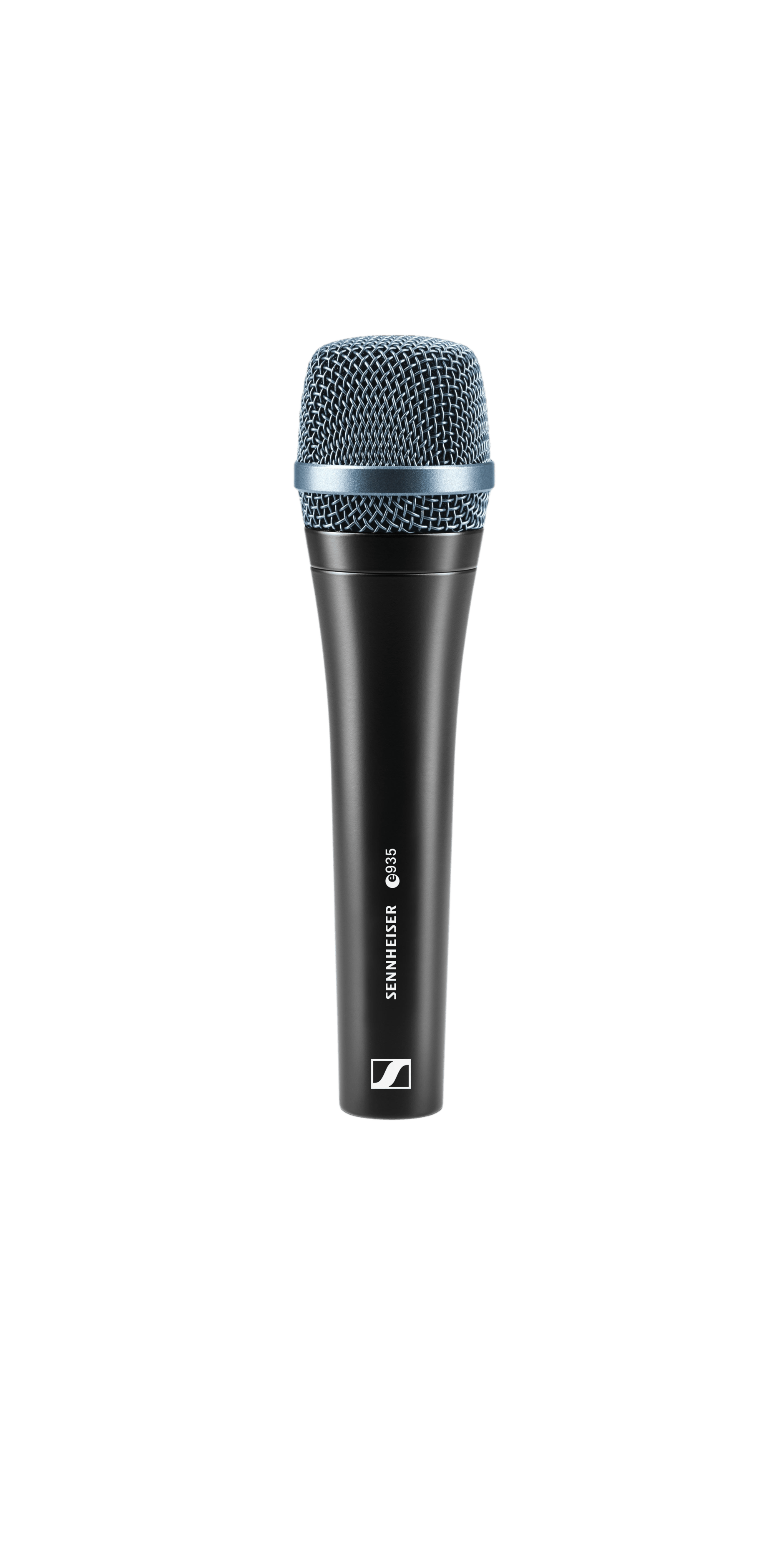The Sennheiser e945 Vs. e935: Our Definitive Handheld Mics

Sennheiser is a leader in handheld vocal stage microphone performance and reliability. Our dynamic mics, like the e945 and e935, are favorites for live use among amateur and professional musicians for their sound reproduction and rugged construction. Similar-looking and performing similar roles, the two are often mistaken for one another. However, some key differences separate the two that you'll want to know about.
Let's take a deeper look at both models to see why these two completely different microphones are both first-call choices on live stages everywhere.
What Are The Sennheiser e935 And e945?
The e945 and e935 are widely regarded as industry-standard handheld dynamic vocal microphones. They each deliver natural onstage sound while achieving it in slightly different ways. Both microphones also offer low handling noise and withstand the rigors of live performance. All together, the e935 and e945 have earned a place in the hands of countless vocalists worldwide.
The Similarities Between The e935 And e945
These microphones get confused because they perform similar tasks with a similar look. They're both also built ruggedly, voiced for the road, and mitigate unwanted noise and interference. It's easy to see why both are found on countless stages with countless vocalists.
Rugged construction:
Performance can take a toll on gear, and these mics are ready to go to work. Built with rugged metal housing materials, they can withstand the wear and tear of constant road use. Their metal construction and dent-resistant grills can easily endure drops, bumps, and other accidental impacts.
Voiced For The Stage:
Both microphones excel in live performance environments, where clear intelligibility is king. Though aimed at different styles and mixes, both microphones handle high sound pressure levels (SPL) without distortion and translate vocal performances with personality and detail.
Low Noise:
Live handheld vocal mics move around a lot during a performance. That's why the e935 and e945 feature a shock-mounted capsule that minimizes handling noise. Both microphones are also equipped with a hum-compensating coil, which reduces electrical interference. They ensure clean audio output while you're putting on a show.
The Differences Between The e935 And e945
While the e945 and e935 share a common purpose, it's how they achieve it that sets them apart.
How They Sound:
The e935's high output, presence, and pronounced upper-midrange response help vocals stand out in a dense mix. The e945, on the other hand, has a smoother response and focuses on detail and clarity. It captures vocals with a balanced sound, emphasizing the warmth and richness of the voice.
Polar Pattern:
The biggest difference between the mics is in their polar patterns. The e935 features a cardioid pickup pattern, which captures sound primarily from the front of the microphone while rejecting unwanted sound from the sides and rear. This helps isolate it from other onstage signals and provides excellent feedback rejection. Handheld cardioid mics also give vocalists added freedom of movement without having to be right on the mic for the best results.
The e945 is a dynamic super-cardioid handheld microphone. Its polar pattern offers a narrower pickup angle than the e935. This provides even greater focus on the vocalist and further rejects unwanted bleed from the sides of the mic. It can also offer a slight increase in low-end (proximity effect), which can add warmth to female vocals.
Application:
If your performance is all about performance, the e935 is a versatile microphone that will treat you right. It is well-suited for a wide range of styles, from rock, rap, and pop to blues and country, and ensures your voice is heard loud, clear, and at its best.
Due to the e945's naturally smooth response and tight supercardioid pickup pattern, it is a favorite for jazz, classical, and folk music. It's a better option when a more natural and uncolored sound is desired. And it's still a great option for high-energy female vocalists putting on a show.
Knowing Which One To Use And When
Both microphones deliver excellent results with various sound sources but excel at live vocals. The e935's high output and presence are great for male singers with powerful voices, while the mic's cardioid pattern doesn't require strict mic technique to sound its best.
The e945's smooth frequency response and supercardioid pattern are excellent for transmitting the details of nuanced performances and female voices. Its supercardioid polar pattern ensures those performances remain free from external sound sources bleeding through.
Which One Is Right For You?
There is a reason professionals choose Sennheiser mics like the e945 and e935. They've made them two of the most popular handheld vocal microphones on the market. While they share many similarities, their distinct polar patterns and sonic characteristics make them go-to options for entirely different applications. The e935 is a versatile workhorse mic that cuts through the mix. The e945, however, is a nuanced performer that prioritizes vocal clarity and detail.
Whichever is the best dynamic microphone is up to your specific needs and sound quality preferences. Consider factors such as your vocal style, the type of music you perform, and the typical performance environment when deciding. You'll find there's a Sennheiser that fits the bill.

